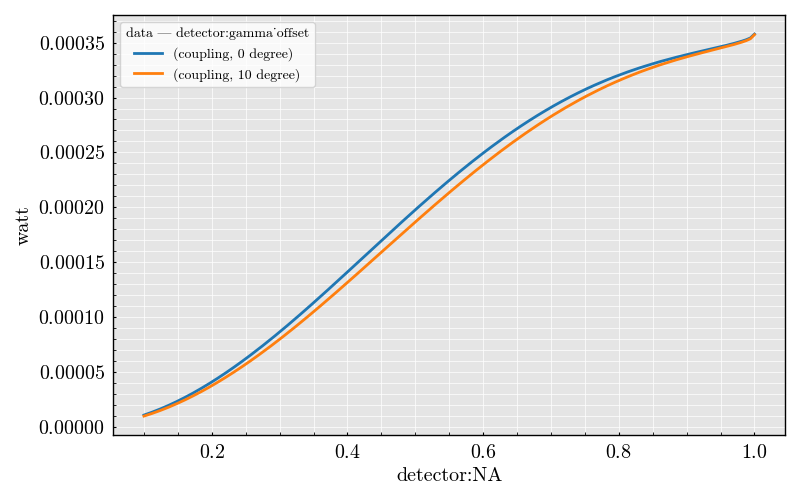Note
Go to the end to download the full example code.
Sphere: Coupling vs numerical aperture#
Importing the package dependencies: numpy, PyMieSim
import numpy as np
from TypedUnit import ureg
from PyOptik import Material
from PyMieSim import experiment
from PyMieSim import single
Defining the source to be employed.
source = experiment.source.Gaussian(
wavelength=500 * ureg.nanometer,
polarization=0 * ureg.degree,
optical_power=1e-3 * ureg.watt,
NA=0.2 * ureg.AU,
)
Defining the ranging parameters for the scatterer distribution
scatterer = experiment.scatterer.Sphere(
diameter=500e-9 * ureg.meter,
property=Material.BK7,
medium_property=1 * ureg.RIU,
source=source,
)
Defining the detector to be employed.
detector = experiment.detector.Photodiode(
NA=np.linspace(0.1, 1, 150) * ureg.AU,
phi_offset=0 * ureg.degree,
gamma_offset=[0, 10] * ureg.degree,
sampling=2000 * ureg.AU,
)
Defining the experiment setup
setup = experiment.Setup(scatterer=scatterer, source=source, detector=detector)
Measuring the properties
dataframe = setup.get("coupling", drop_unique_level=True)
Plotting the results
dataframe.plot(x="detector:NA")
single_source = single.Gaussian(
wavelength=950 * ureg.nanometer,
polarization=0 * ureg.degree,
optical_power=1e-3 * ureg.watt,
NA=0.2 * ureg.AU,
)
single_scatterer = single.scatterer.Sphere(
diameter=500 * ureg.nanometer,
property=Material.BK7,
medium_property=1 * ureg.RIU,
source=single_source,
)
print(single_scatterer.Qsca * 1e-3)

0.0010531644483825241 dimensionless
Total running time of the script: (0 minutes 0.371 seconds)
